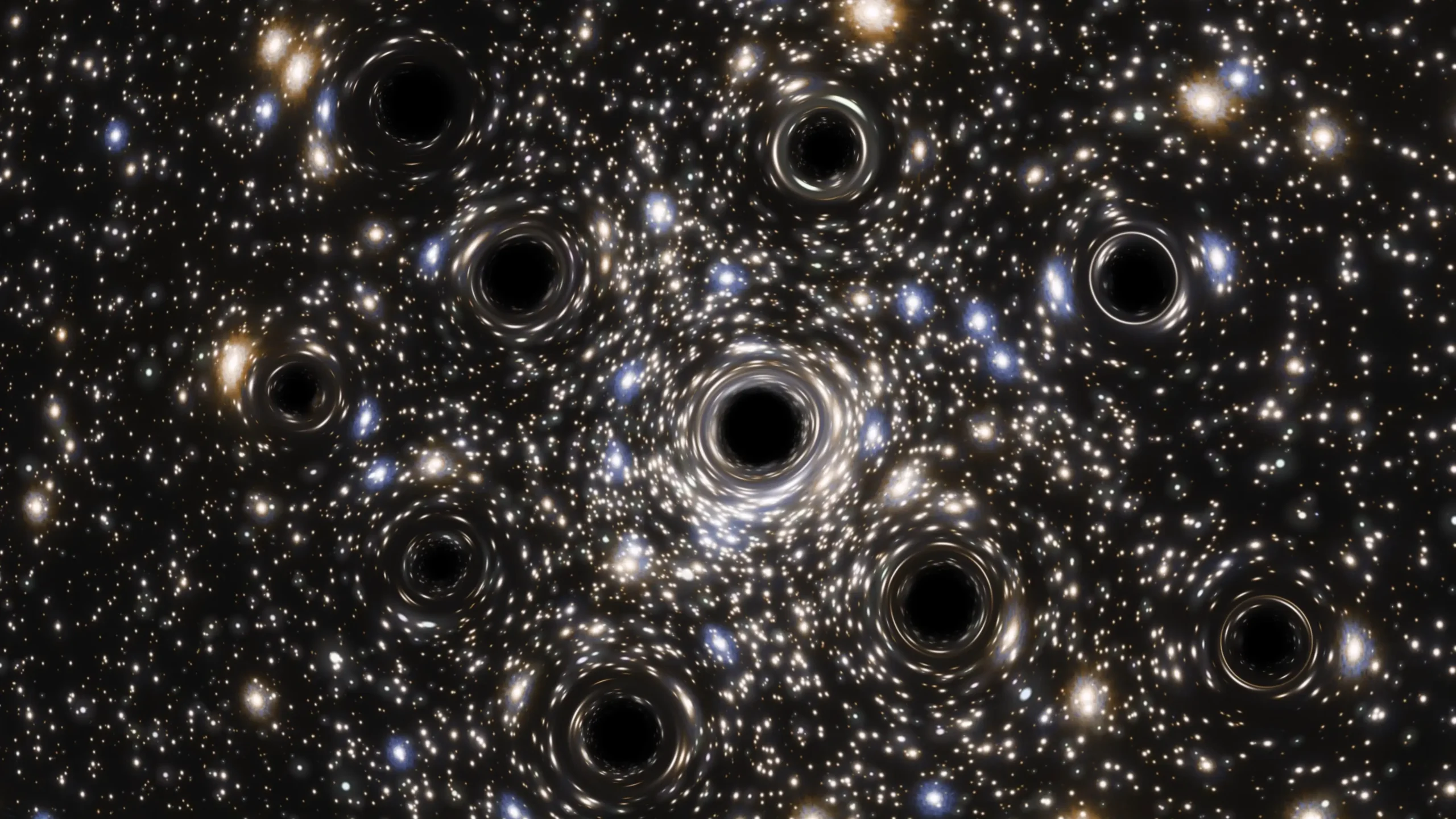Astronomers have detected over 100 stellar-mass black holes in the Palomar 5 star cluster, offering new insights into the formation of tidal streams and the life cycle of globular clusters.
Key Points at a Glance
- Unique Cluster Discovery: Palomar 5, located 80,000 light-years away, harbors over 100 stellar-mass black holes within its stellar stream.
- Tidal Stream Formation: The cluster’s distinctive tidal stream, spanning 30,000 light-years, is linked to gravitational interactions with its black hole population.
- Cluster’s Fate: Simulations predict Palomar 5 will dissolve into a stellar stream in a billion years, leaving only black holes behind.
- Broader Implications: The findings enhance our understanding of black hole dynamics and globular cluster evolution, with implications for future black hole merger studies.
Astronomers using the Gaia space observatory have uncovered a remarkable phenomenon in the Milky Way: a cluster of over 100 stellar-mass black holes residing in the star cluster Palomar 5. This discovery sheds light on the dynamics of globular clusters and their evolution into tidal streams, providing a key to understanding similar phenomena throughout the galaxy.
Palomar 5, located approximately 80,000 light-years from Earth, is a stellar cluster with a strikingly loose star distribution and an elongated tidal stream stretching 30,000 light-years. Such streams form when stars are ejected from their clusters due to gravitational interactions. The study’s lead scientist, astrophysicist Mark Gieles of the University of Barcelona, emphasizes the importance of Palomar 5 as a unique case for studying tidal stream formation.
“Palomar 5 is the only cluster with a clear association to a stellar stream,” Gieles explained. “This makes it a Rosetta Stone for understanding how such streams form and evolve.”
Using N-body simulations, the research team recreated the orbits and evolutionary paths of Palomar 5’s stars, factoring in gravitational interactions with stellar-mass black holes. Their findings reveal that the cluster’s configuration is heavily influenced by a significant population of black holes—far more than initially expected. These black holes, each roughly 20 times the mass of the Sun, likely formed from supernova explosions during the cluster’s youth.
“More than 20 percent of Palomar 5’s total mass is composed of black holes,” Gieles noted. “This is roughly three times higher than what we would predict based on the cluster’s star count.”
The team’s models indicate that gravitational interactions with these black holes accelerate the ejection of stars, contributing to the cluster’s distinctive tidal stream. Over time, these interactions will lead to the cluster’s complete dissolution, leaving behind a stream dominated by black holes.
The findings have far-reaching implications for astrophysics, particularly in the study of black hole populations and their role in globular cluster dynamics. As Palomar 5 and other clusters dissolve, they provide a fertile environment for detecting elusive black hole mergers and exploring the formation of intermediate-mass black holes—a class between stellar-mass and supermassive black holes.
Astrophysicist Fabio Antonini of Cardiff University highlights the broader impact of the study: “A big unknown in cluster dynamics is the number of black holes they harbor. Our method offers a way to estimate black hole populations by analyzing the stars they eject.”
Simulations predict that Palomar 5 will dissolve completely within a billion years. As its stars escape, only the black holes will remain, orbiting the galactic center as a dense, dark relic. This eventual fate suggests that many globular clusters could undergo similar transformations, enriching the galaxy with tidal streams and unseen black hole swarms.
The research, published in Nature Astronomy, underscores the importance of tools like the Gaia observatory in unraveling the hidden dynamics of our galaxy. By mapping stellar movements with unprecedented precision, Gaia continues to reveal the intricate interplay of stars, black holes, and galactic structures, offering a deeper understanding of the universe.
